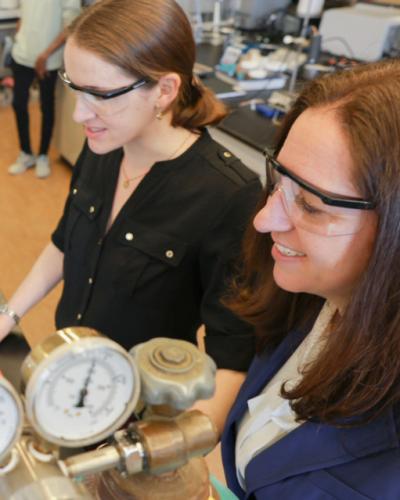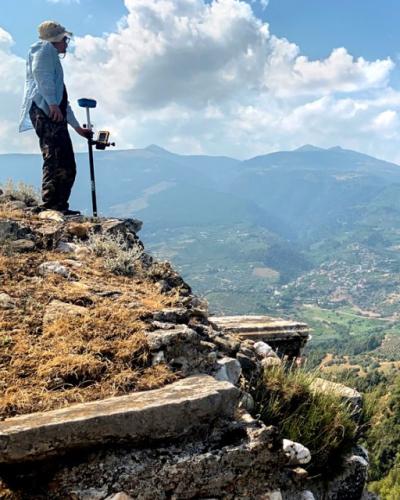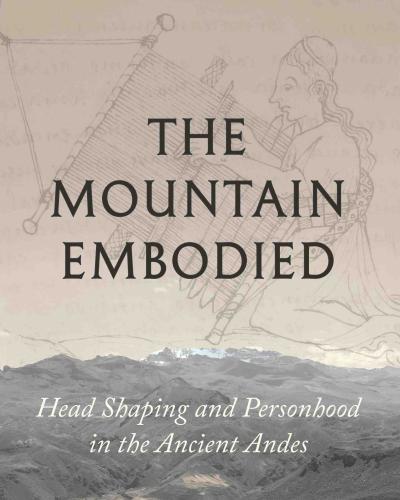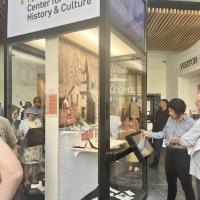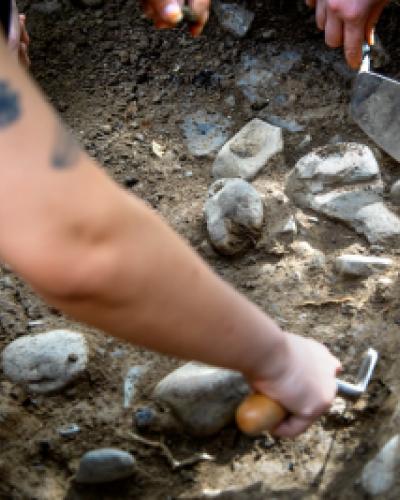During the fall of 2021, sixteen Cornell graduate and undergraduate students took part in the St James AME Zion Community Excavations alongside Cornell faculty and middle and high school community members. The student participants included CIAMS graduate student members and Archaeology undergraduates as well as participants from other majors and programs. After the end of the excavation season, the students took some time to reflect on their engagement with the project.
Students’ activities ranged from digging with and mentoring young community participants to cleaning and sorting finds and helping with dendrochronology sampling inside the church. For some Cornell participants, the St. James dig was their first experience excavating. CIAMS M.A. student Nikhil Arolkhar reflects, “I have wanted to excavate at an archaeological site since I was eight years old... So naturally, for me, this was a dream come true.” College Scholar undergraduate Aliou Gambrel shared about his experience working with a young community participant who was particularly “spirited” and “so full of that indescribable quality of young people... [that] she helped me overcome my initial reservations.”
For other students, many of whom have had fieldwork abroad canceled or postponed due to COVID, the St. James excavations were a long-awaited return to the trowel, right at home here in Ithaca. Anna Whittemore, an Anthropology Ph.D. student, wrote, “One of my favorite parts of living in Ithaca is being surrounded by beautiful old buildings that clearly have so much history. It was such a joy and privilege to join this collaboration at St. James—this really remarkable, still-vibrant place just a few blocks from my home.”
The chance to engage with local history and to participate in something with and for the local community was a highlight for many students. Charline Jao, a Ph.D. student in Literatures in English, wrote, “As a grad student in the Literatures in English program, I'm used to encountering abolitionist history in archives, reading rooms, or on a computer screen. The excavation gave me the opportunity to find history in the earth and really appreciate Ithaca's past.” Gambrel was particularly moved by the opening ceremony for the excavations on September 18th and the significance of the site as a stop on the Underground Railroad: “This project seeks to know, to understand... the presence of those voices and faces that are currently still hidden. The necessity of this hiding is gone, but... it was clear [at the ceremony] that this community and many like it across the diaspora have been calling out to these forebears—wanting to feel their presence if only to acknowledge the courage of their flight towards freedom."
The involvement of the local community in the project was also memorable. “The presence and participation of community members built a special atmosphere and contextualized the ongoing cultural legacy of the Underground Railroad,” reflected Madeleine Wenger ‘24, an Archaeology major. Charlee Mandy ‘24, a double-major in Archaeology and Classics, wrote that participating in the excavations “confirmed to me that the most rewarding archaeology happens in partnership with community members, guiding the project’s vision and sharing inherited knowledge of the stories beneath our feet.”
Sophia Taborski, a Ph.D. candidate in Classical Archaeology and a member of CIAMS, emphasized the ethical importance of community involvement in the St. James excavations, saying that the excavations were a "model for community engagement in archaeology” that she cited in her own academic work. Josie Miller, a CIAMS M.A. student, shared, “I am incredibly grateful for the opportunity to do an archeological investigation that feels wanted by community members and that will provide a new kind of information for the congregation about their heritage and relationship to the underground railroad, adding another historical dimension to the stories that have been passed down through generations of the St. James congregation.”
The camaraderie and supportive atmosphere they experienced on the dig, even on the coldest days of fall in Ithaca, made an impression jon the Cornell students who participated. Charline Jao recalled “the collective celebration each time we found a piece of glass, porcelain, or nail." Emma Van Metre (B.A. Archaeology) said, “I really enjoyed seeing how so many disciplines and fields came together to work in harmony on this project, from the dendrochronologists up in the belfry to those of us getting muddy in the trenches. It was a great project to work on and I appreciated every second of it, even the ones spent out in the freezing cold.”
Charlee Mandy put it poetically: “It was a privilege to be part of the St. James excavations. In sunshine and frost alike, as we gathered around the trenches to witness each other’s discoveries and field each other’s questions, it felt like we were reaching down into the earth—and back into time—to grasp at fragments of countless important lives.”
Learn more about the first season of the St. James AME Zion Community Excavations in Susan Kelley's Cornell Chronicle article, also posted on the Cornell College of Arts & Sciences News page.
Image credit: Ryan Young (UREL). This image was originally published as part of the article by Susan Kelley linked above.

